Seaweeds of the South African South Coast


Order Ceramiales
Family Rhodomelaceae
Polysiphonia incompta Harvey 1847: 44
Plants up to 6 cm tall (usually 2-3 cm), with a tangled mass of prostrate and erect filaments, attached by many rhizoids cut off from the pericentral cells of prostrate axes, often one or two rhizoids present per segment. Segments with four pericentral cells, without cortication. Chloroplasts in the pericentral cells concentrated along the radial cell walls, leaving the peripheral walls free (but see note below). Branching at intervals of 3 to many (over 20) segments, laterals exogenous. Young segments each with a branched or unbranched trichoblast. Filaments up to 400 µm across in prostrate axes, gradually decreasing towards the apex. Segments 0.5 – 2 times as long as broad.
Tetrasporangia in tortuous series in apical sections of the plant. Sporangia measuring up to 75 µm across, with two long cover cells. Male stichidia single on the suprabasal cell of the trichoblast, at maturity ca. 250 x 60 µm, without sterile apex. Cystocarps nearly globose, ca. 500 µm in diameter at maturity, with an ostiole surrounded by a ring of large cells (to 70 µm broad).
Collections, ecology and regional distribution
Recorded along the entire coast of South Africa (1-58). A common species, found (usually in turfs) throughout the eulittoral zone, in rock pools and in the shallow sublittoral. Epilithic, epiphytic and epizoic. Also recorded from some estuaries, attached to fringing vegetation.
World distribution: also recorded from Namibia and Mozambique (Rull Lluch 2002, Silva et al. 1996).
Type locality: near Muizenberg, False Bay, Western Cape Province, South Africa (Silva et al. 1996).
Note: We have collected a male plant of an entity that also has chloroplasts only on the radial cells walls, but which has a thinner creeping base (250 µm) and larger stichidia (to 375 µm long), which is briefly described and illustrated as Polysiphonia sp 3. We are however, uncertain of its affinities.
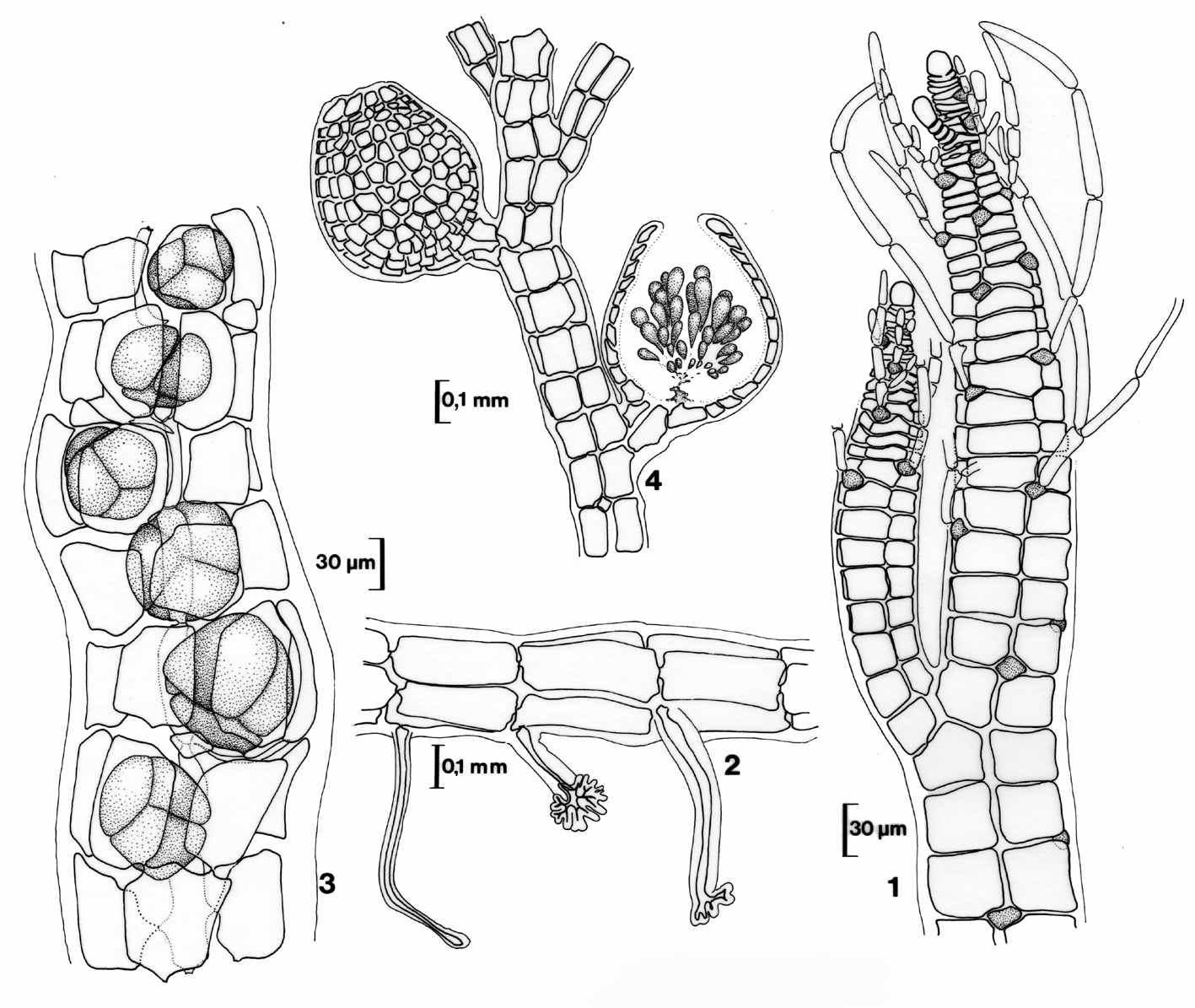
Polysiphonia incompta. 1. Thallus apex. 2. Prostrate axes with haptera. 3. Tetrasporangia. 4. Cystocarps, one in optical section showing carposporophyte (reproduced from Stegenga et al. 1997).
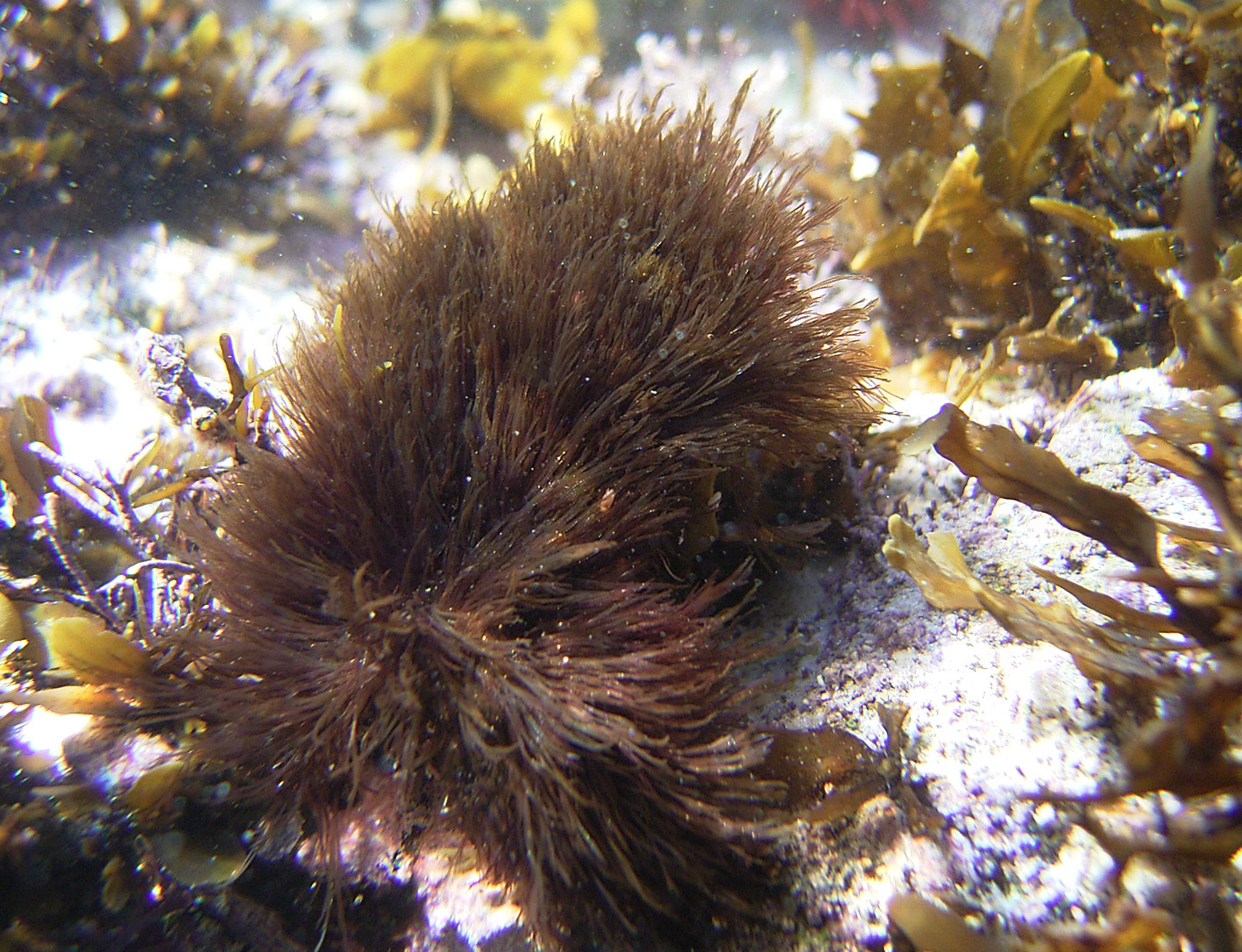
Polysiphonia incompta, De Hoop.
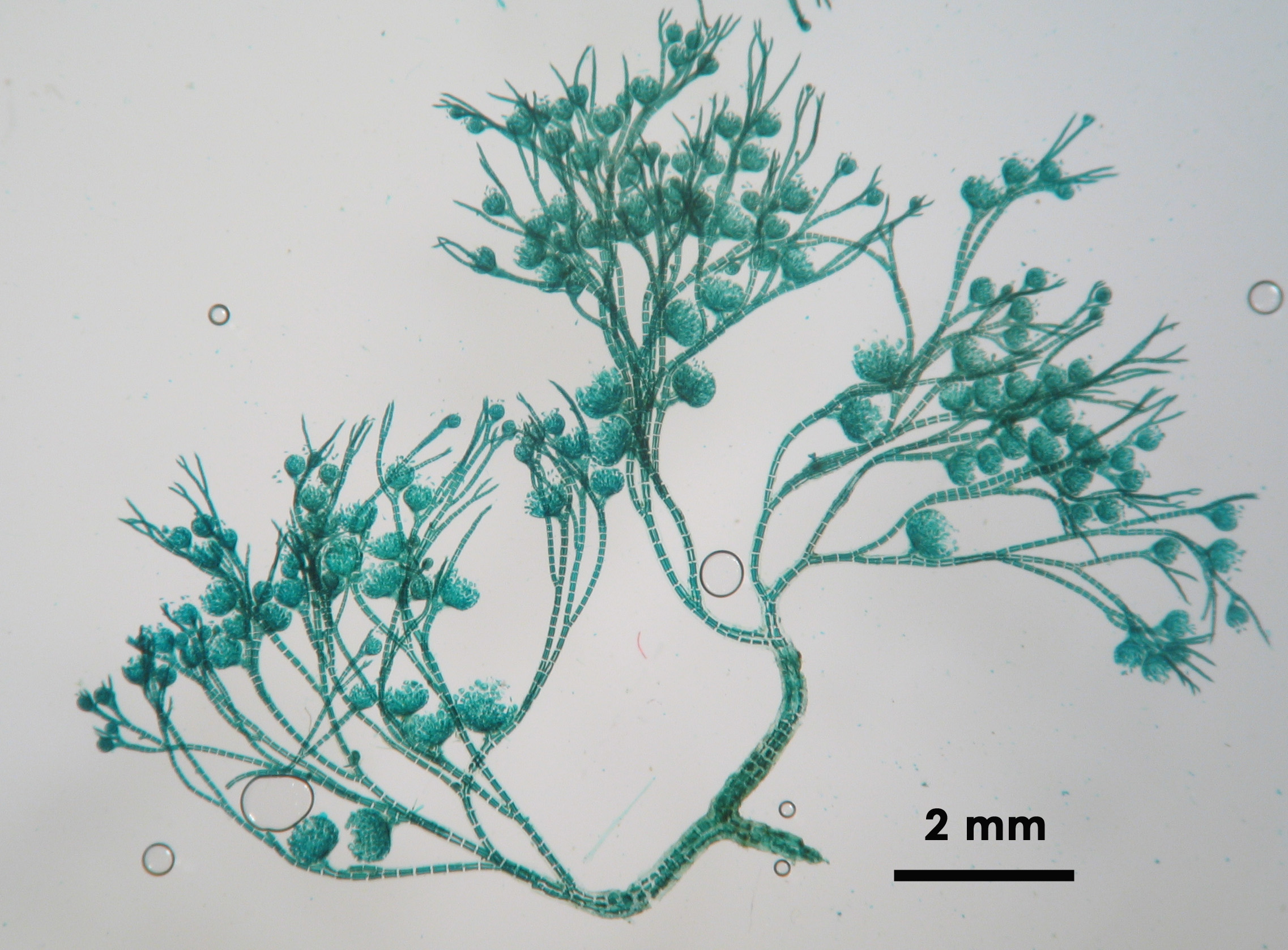
Polysiphonia incompta, slide mount of female thallus with cystocarps.
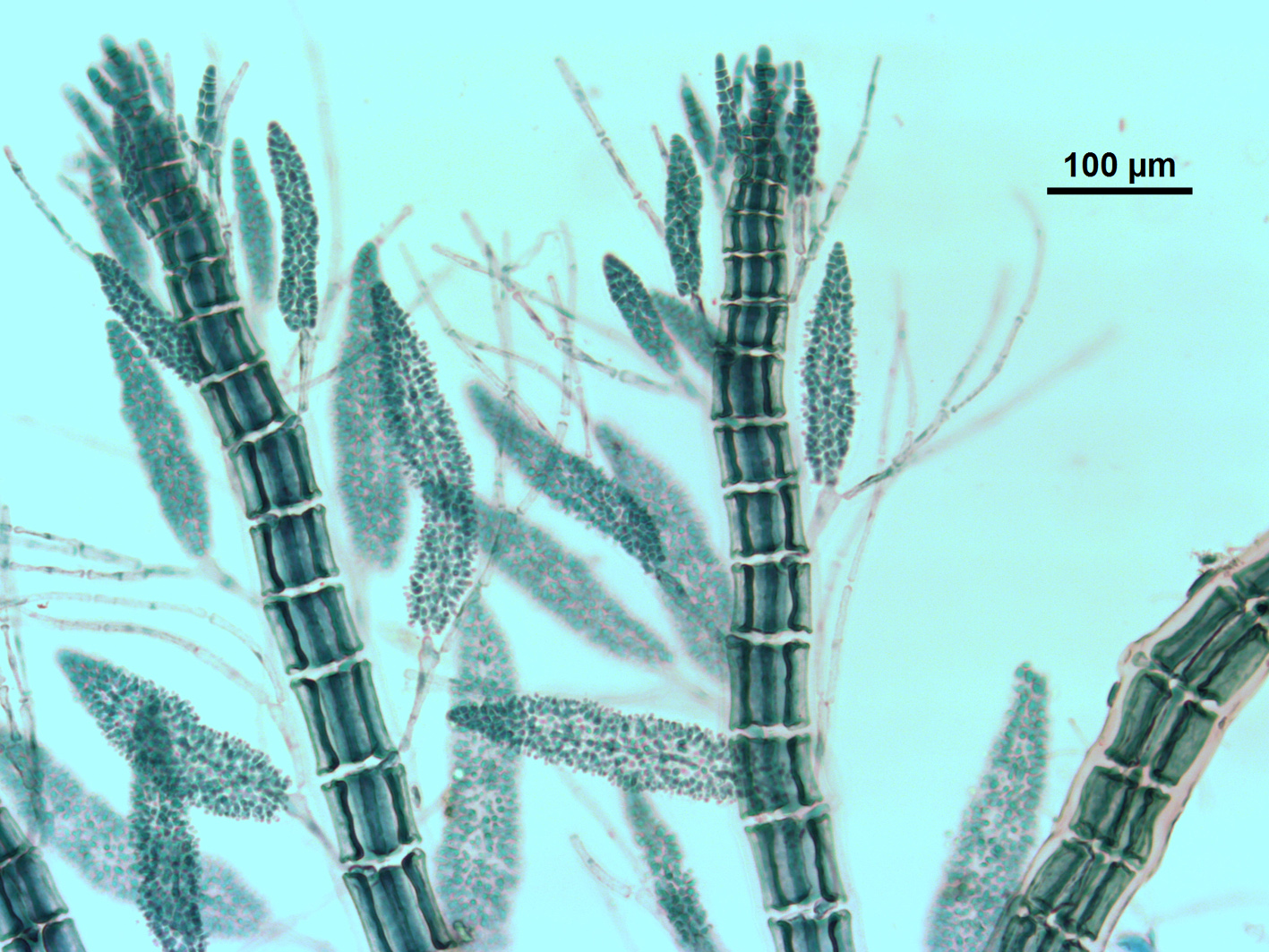
Polysiphonia incompta, with spermatangial stichidia (stained slide).
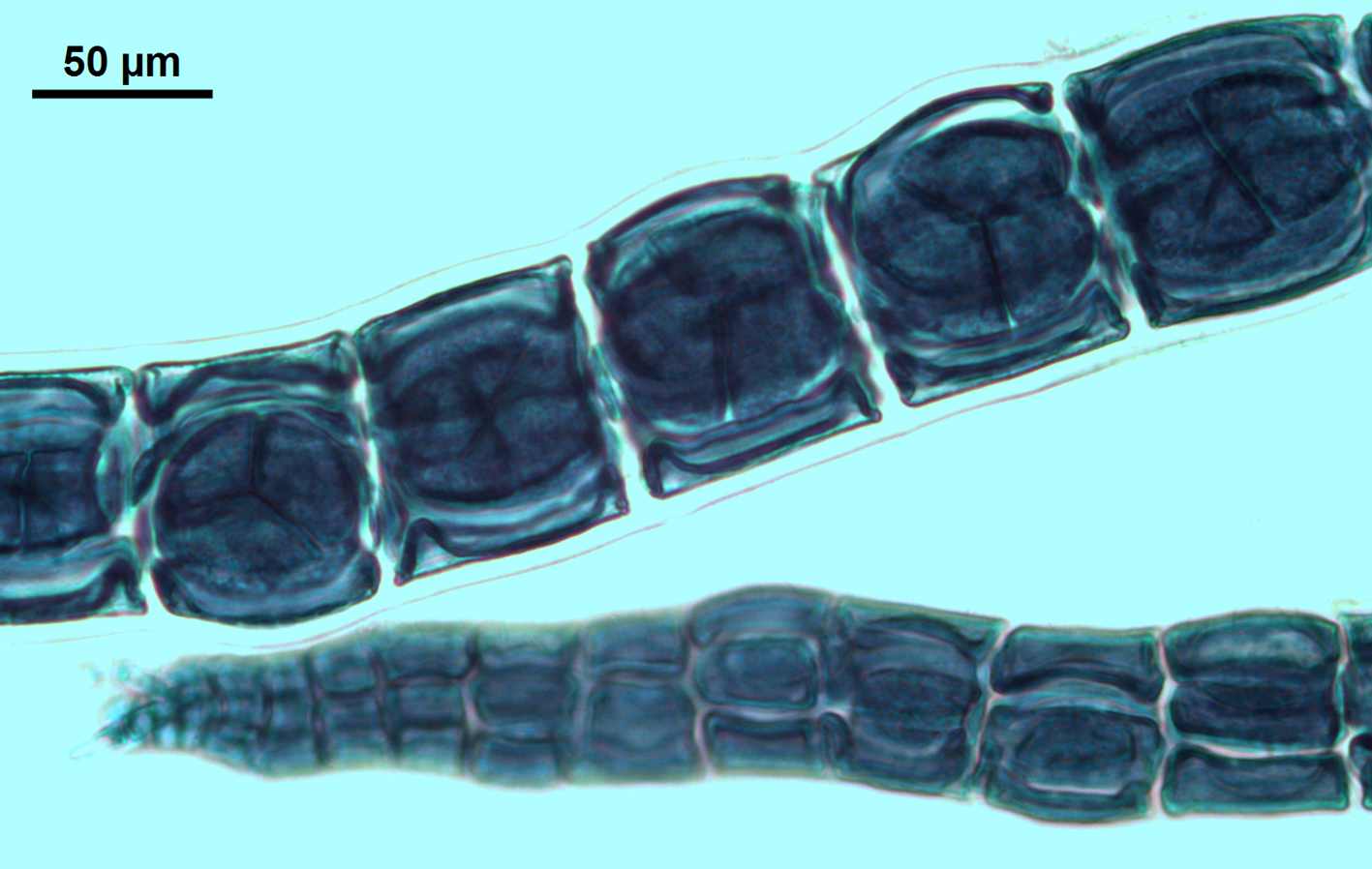
Polysiphonia incompta, tetrasporangia.
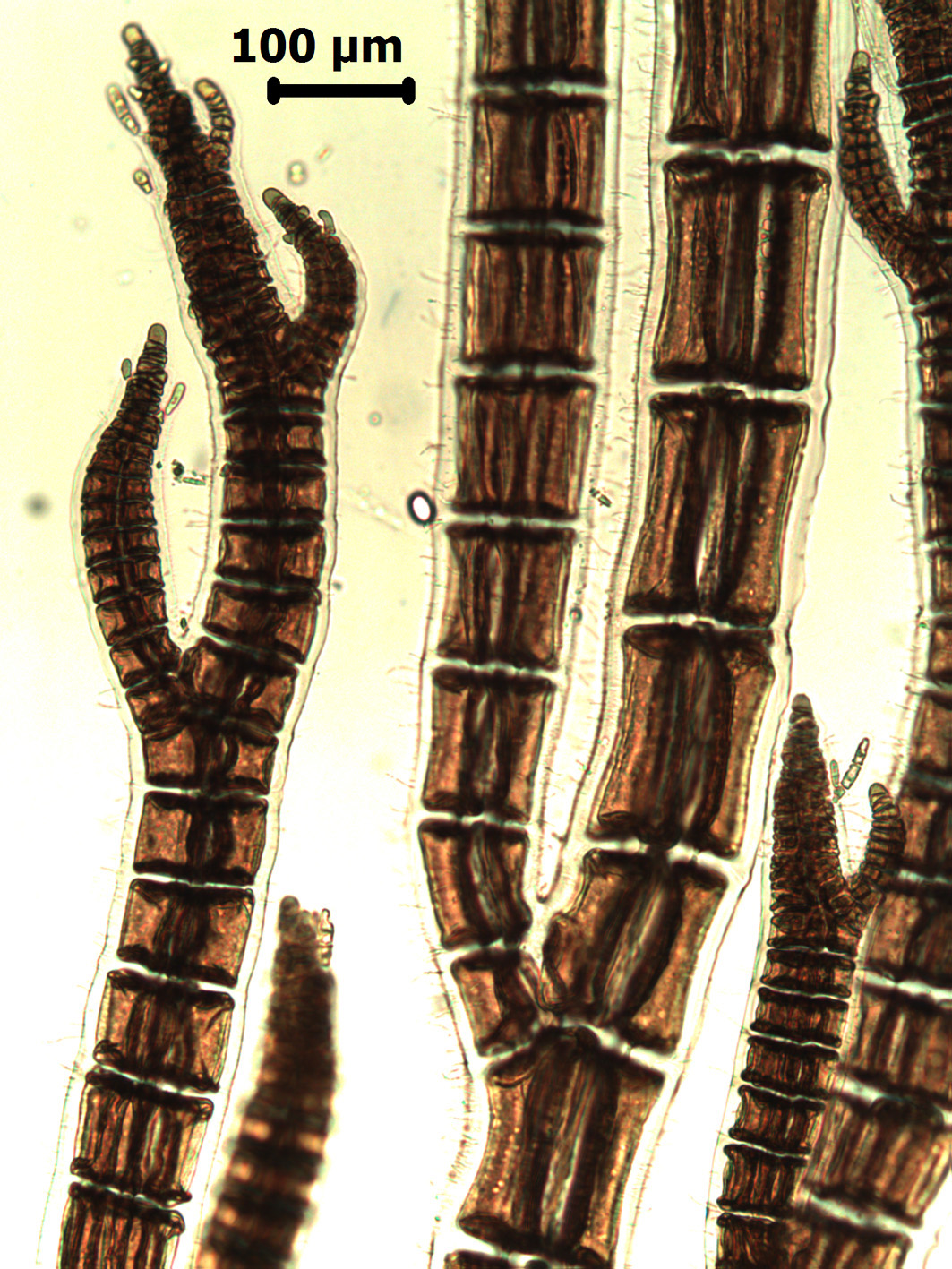
Polysiphonia incompta, cell details.
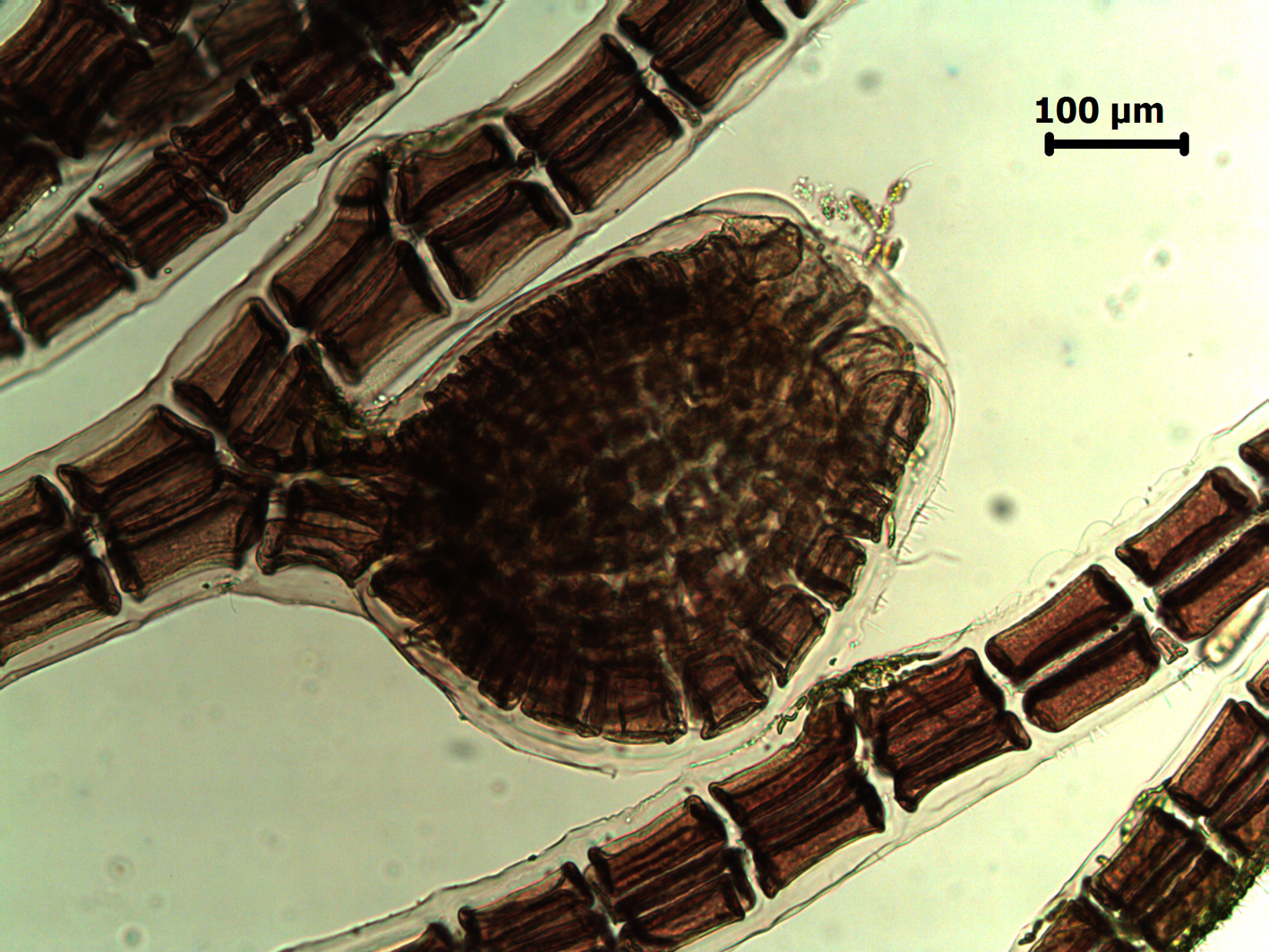
Polysiphonia incompta, cystocarp.
Note: Polysiphonia sp. 3
We have a single, male specimen of an entity that also has the chloroplasts only on the radial cell walls, but has thicker axes and larger male stichidia than P. incompta. We are uncertain of its affinities and it is described and illustrated below.
Plants with creeping base up to 250 µm thick. Pericentral cells four, without cortication. Segments in the whole thallus about as long as broad. Pericentral cells with chloroplasts on the radial walls, not on the peripheral walls. Male stichidia relatively large, one, rarely two per stalk cell, dimensions up to 375 X 75 µm, without sterile terminal cells. Other reproductive structures not seen.
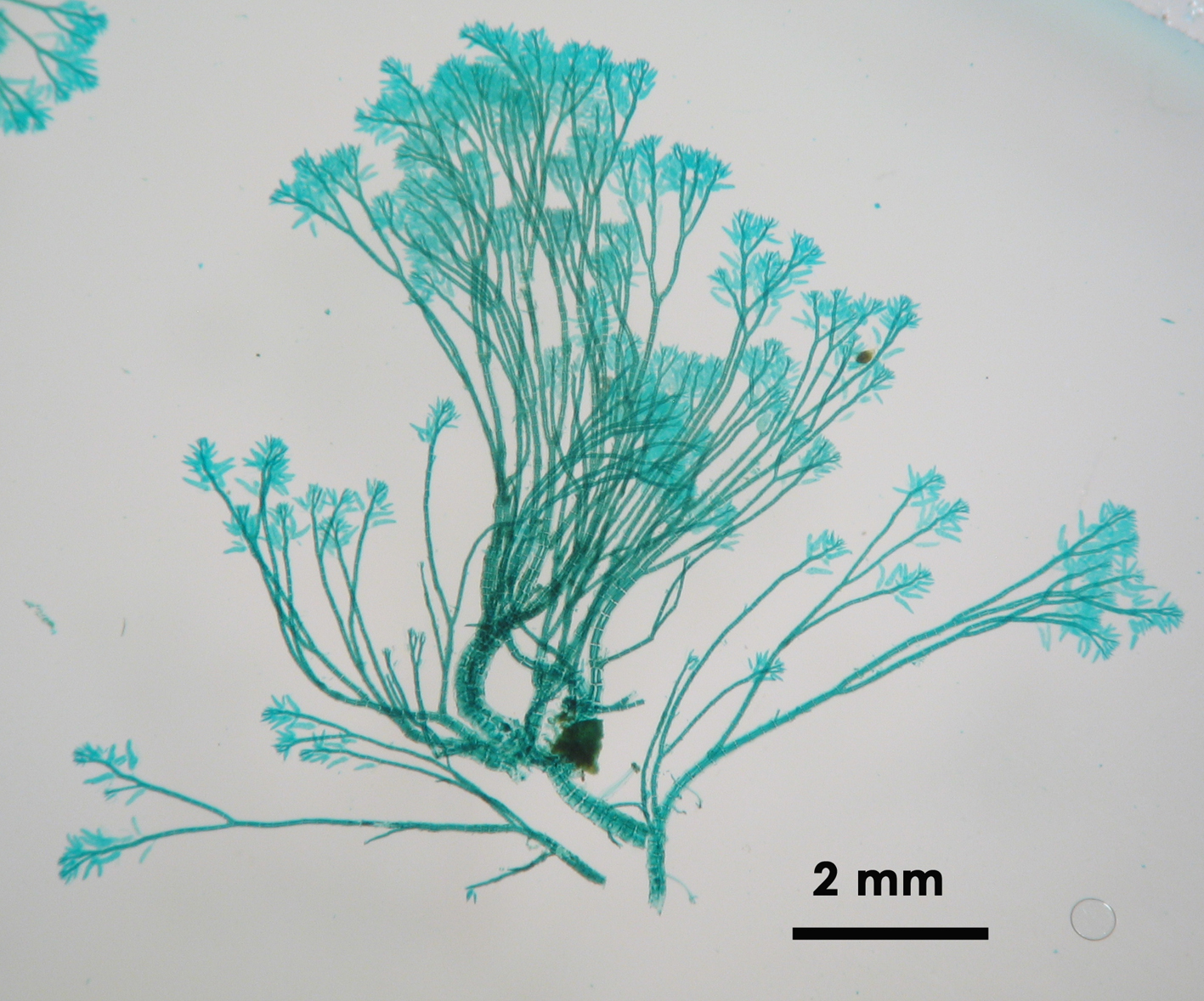
Polysiphonia sp. 3. Whole mount of male thallus. (stained slide).
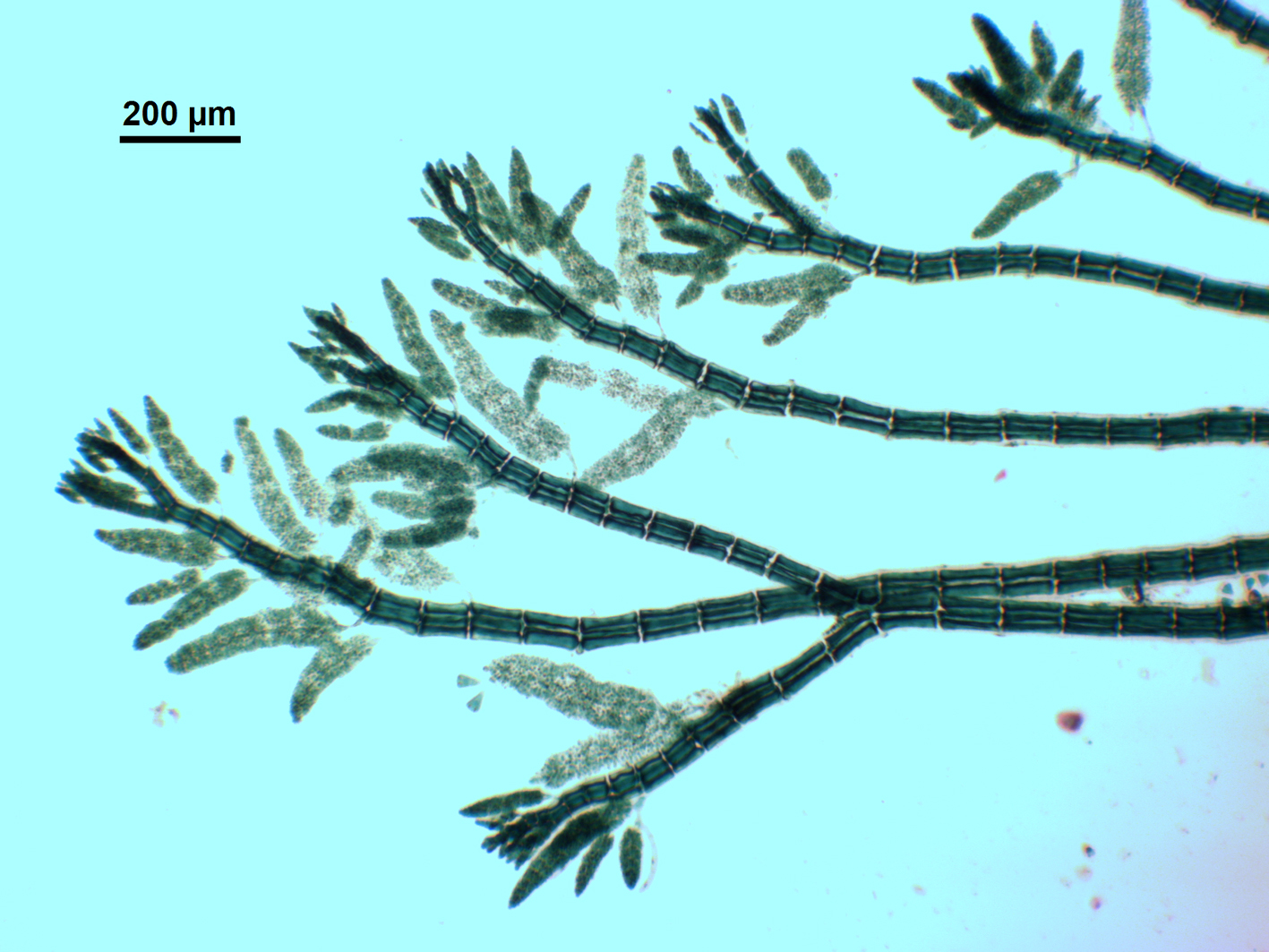
Polysiphonia sp. 3. Apex of male thallus. (stained slide).
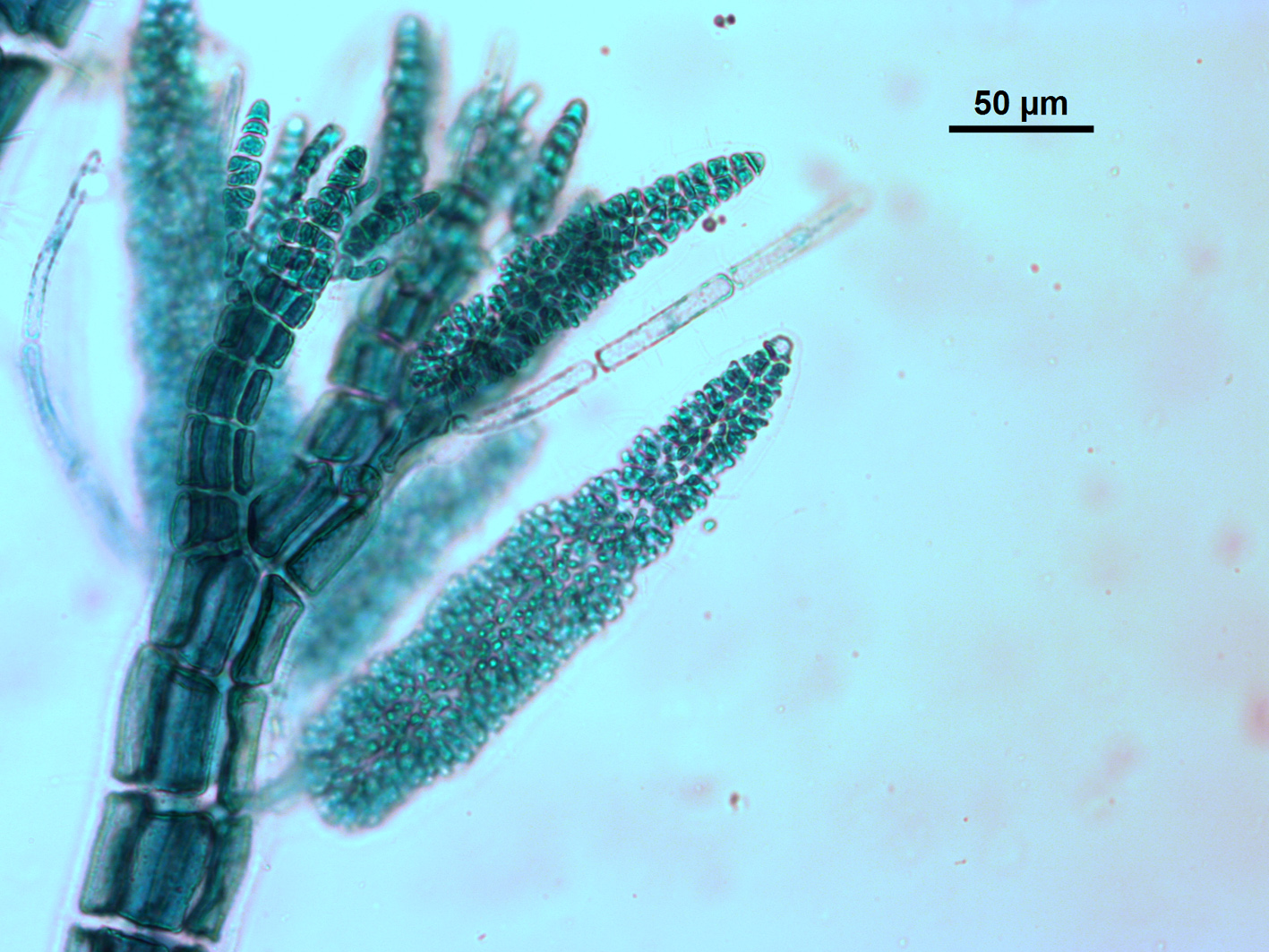
Polysiphonia sp. 3. Detail of spermatangial stichidia (stained slide).
References Polysiphonia incompta
Harvey, W.H. 1847. Nereis australis, or algae of the southern ocean: being figures and descriptions of marine plants, collected on the shores of the Cape of Good Hope, the extra-tropical Australian colonies, Tasmania, New Zealand, and the Antarctic regions; deposited in the Herbarium of the Dublin University. [Part 1]. pp. i-viii, 1-64, pls I-XXV. London: Reeve Brothers.
Rull Lluch, J. 2002. Marine benthic algae of Namibia. Scientia Marina 66 (Supplement 3): 258 pp.
Silva, P.C., Basson, P.W. & Moe, R.L. 1996. Catalogue of the benthic marine algae of the Indian Ocean. University of California Publications in Botany 79: 1-1259.
Stegenga, H., Bolton, J.J. & R. J. Anderson. 1997. Seaweeds of the South African west coast. Contributions from the Bolus Herbarium 18: 655 pp.
Cite this record as:
Anderson RJ, Stegenga H, Bolton JJ. 2016. Seaweeds of the South African South Coast.
World Wide Web electronic publication, University of Cape Town, http://southafrseaweeds.uct.ac.za; Accessed on 21 December 2025.